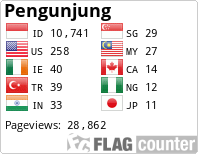The Effect Of Using Anticipation – Reaction Guide Strategy On Students’ Reading Comprehension In Recount Text At The Eighth Grade Of SMPN 3 Palembayan
DOI:
https://doi.org/10.55606/jupensi.v3i3.2607Keywords:
Reading Comprehension, Anticipation Guide, Recount TextAbstract
This Research was done due to several problems found: Students ability in reading were low, lack of interesting in reading, and students were difficult to comprehend the text. Anticipation Reaction Guide strategy is related to this problem because the Anticipation Reaction Guide is enabled strategy to help the students who may hold misconceptions regarding a specific concept based on the lesson in reading. Therefore, this research was to investigate the effect of using Anticipation Reaction Guide Strategy on Students’ Reading Comprehension. This research used quantitative method with quasi-experimental design by comparing two classes. The researcher used a cluster sampling technique because teacher recomendation and these class have similar characteristics. The total sample was 53 students of VIII 1 and VIII 2. The researcher used multiple test wich consisted of pre test and post test were applied in collect the data. Based on the data analysis used T- test Formula. The result from post test both of classes, it was t-obtained (2.73) was higher than the t-table (2.009). So it means that alternative hypothesis (Ha) was accepted while the null hypotesis (Ho) was rejected. So, it means that using anticipation-reaction guide strategy can help students to increase their reading comprehension.
References
Afriani,. (2020). Thesis: “The Effect of THIEVES Strategy Towards Students’ Reading Comprehension in Recount Text at the Eighth Grade of SMPN 2 Kamang Magek”(Bukittinggi: IAIN Bukittinggi)
Barwick, Jhon. (1998). Targeting Text: Photocopiable Units Based On English Text Type.(Singapore: Black Education)
Bouchard, M. (2005). Comprehension Strategies for English Language Learners.(New York: Scholastic Inc)
Burn,P. C, Betty and Elinor. (1996). Teaching Reading in Today’s Tlementary School. (Boston :Houhton)
Cain, K. (2014). Understanding and Teaching Reading Comprehension: a handbook. London: Routledge.
Linse, C. (2005). Pratical English Language Teaching Young Learner, (The McGraw Hills Companies,Inc.)
Cohen. et.al. (2007). Research Methods in Education.(London & New York,: Routledge Falmer)
Creswell. (2012). “Educational Research: Planning, Conducting and Evaluating Quantitative and Qualitative Research” (Boston: Pearson Education, Inc)
Nunan, D. (2003). Practical English Language Teaching, (New York: Mc Graw Hill)
Brown, D. (2003). Language Assessment Principle And Classroom Practice (Longman: San Francisco State university)
Brown, D and Lee.H. (2015). Teaching by Principle an Interactive Approach to Language Pedagogy. (Pearson Education, Inc.)
Edithia, G. (1999). Developing Reading Skill for EFL Students, (Jakarta: Lembaga Pendidikan Jakarta)
Gay, L. R. (2012). Educational Research: Competencies For Analysis And Applications. (Boston: Pearson)
Grabe, W and Fredericka L. Stoller. (2011). Teaching and Researching Reading.( New York: Pearson Education Limited)
Harmer, J. (2007). How To Teach English (Longman: England)
Hurd, Stella and Lewis, Tim. (2008). “ Language Learning Strategies in Independent Settings”, (USA: British Library)
Zwiers, J. (2010). Building Reading Comprehension Habits (New York: International Reading Association)
Hyland, K. (2003). Second Language Writing (Hongkong: Cambridge University Press)
Knapp.P. and Watkins.M. (2005). Genre Text and Grammar: Technologies for Teaching and Assessing Writing,(Australia: UNSW Press Book)
Lodico, et.al. (2010). Methods in Educational Reseacrh: From Theory to Practice, (New York: Jhon Wiley & Sons, Inc,)
Macaro, E. (2001). “Learning Strategies in Foreign and Second Language Classrom” (Newyork: British Library Cataloguing-in-Publication Data)
Dalman, M. (1964). The Teaching of Reading, (America: Hold Renchard and Wiston)
Reflinda. (2017).The Effect of Learning Strategy &Reading Interest to the Reading Understanding Ability of Students of IAIN Bukittinggi, (IJLRES - International Journal on Language, Research and Education Studies)
Sarode, D. (2018). Teaching Strategies, Styles And Qualities Of A Teacher:A Review For Valuable Higher Education,(IJCESR-International Journal Of Current Engineering And Scientific Research) . Vol-5, p. 58
Sugiyono. (2021). Metode Penelitian Kuantitatif,Kualitatif dan R&D, (Bandung : Alfabeta)
Syafitri, Widya. Problems in learning reading (case study: islamic banking students of IAIN Bukittinggi). (Jurnal Educataive: Journal of Educational Studies).Vol 3, No.1
Tierney, R. J.,Readence, J. E.,& Dishner, E.K,. (2005). Reading strategies and practices: A compendium. Boston: Allyn & Bacon)
Downloads
Published
How to Cite
Issue
Section
License
Copyright (c) 2023 Jurnal Pendidikan dan Sastra Inggris

This work is licensed under a Creative Commons Attribution-ShareAlike 4.0 International License.
















